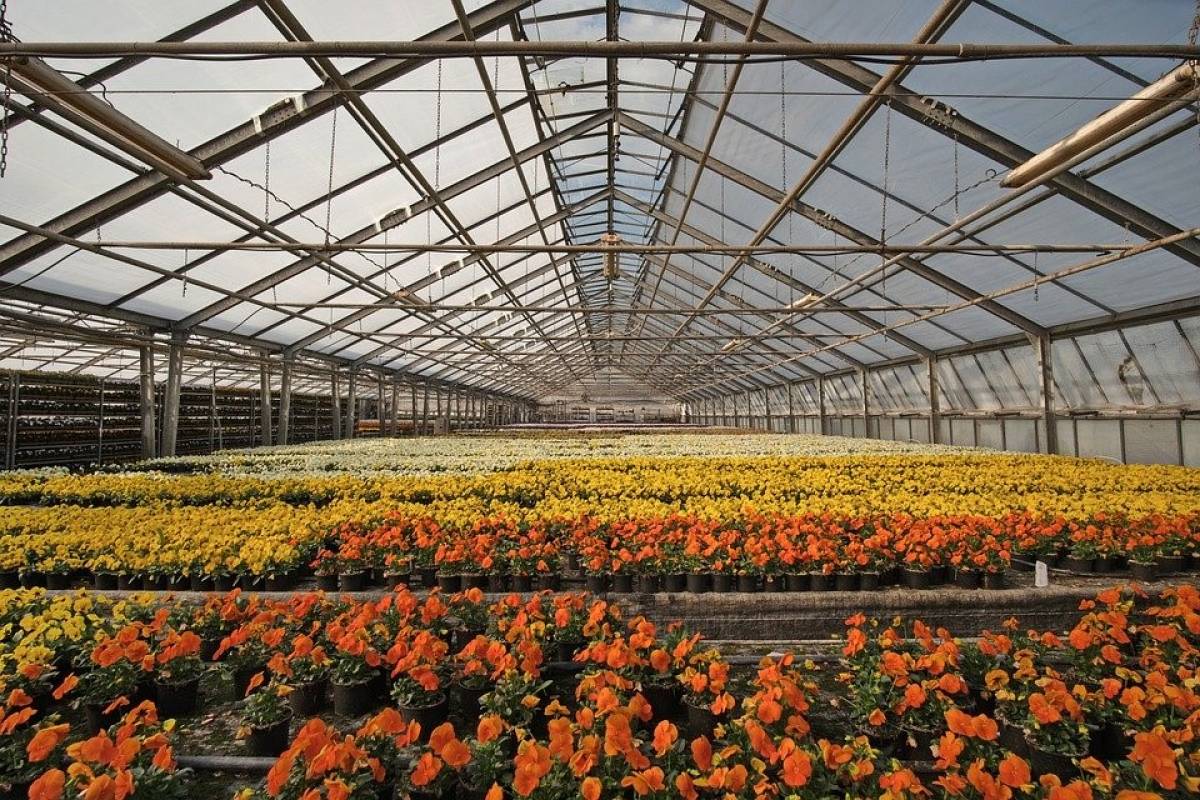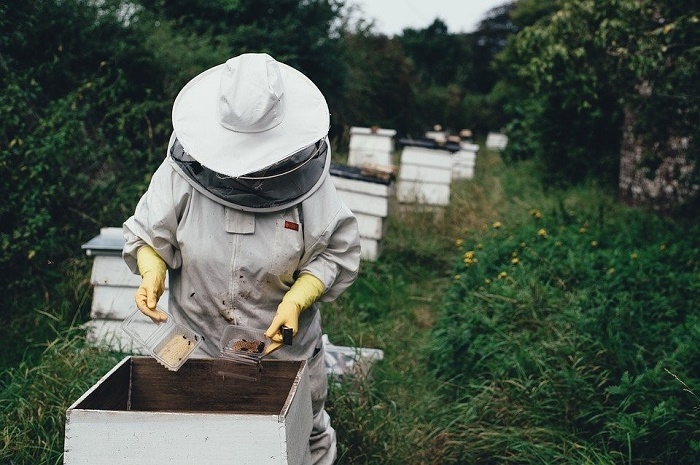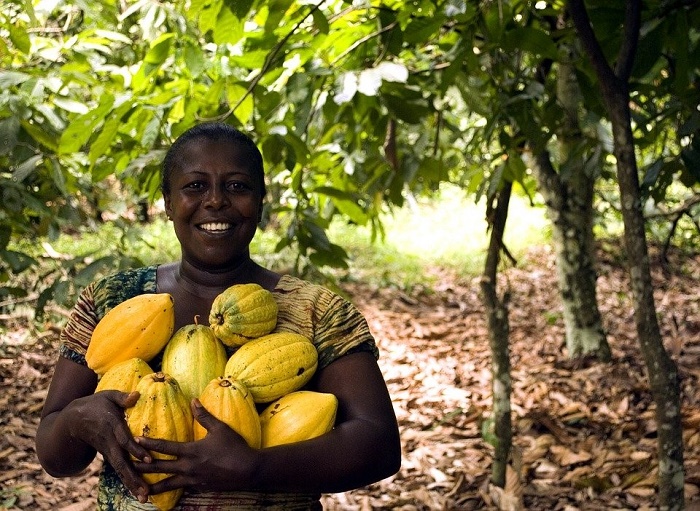10 of the Biggest Agribusiness and Farming Trends Shaping Our World

As we continue on through this decade, savvy business owners are well advised to observe current industry trends, consider their present activities, and also look into the future at what transformations they can make to stay afloat, become more productive, and keep thriving.
Over the years, we have seen rapid improvements in information technology, which continues to bring even more ground-breaking changes in the business world across the board.
In the agribusinesses sector, in particular, those businesses that are attuned to the latest developments, patterns, and swiftly adjust accordingly are the ones that will be well positioned to reap the benefits of all the innovations happening, and increase their competitiveness and profitability.
On the other hand, businesses that don't pay attention to the shifts and changes in the market, or those that delay in their identification, acquisition, and implementation of new technologies and practices are going to face more difficulties and they risk being left behind.
Shifts in the Agribusiness Sector
If you run an agribusiness, have ambitions to enter the sector, or are an interested party, whether it’s in the production, processing or distribution of agricultural goods, you need to stay on top of the latest agribusiness and farming trends shaping the future of our world today.
Over 22 million full- and part-time jobs were related to the agricultural and food sectors in 2018, representing 11.0 percent of total US employment, according to the US Department of Agriculture, Economic Research Service. Direct on-farm employment accounted for about 2.6 million of these jobs, or 1.3 percent of U.S. employment.
Since then, overall employment of agricultural and food scientists is now projected to grow 8 percent from 2021 to 2031, faster than the average for all occupations. About 4,100 openings for agricultural and food scientists are projected each year, on average, in the U.S. over the decade, according to the U.S. Bureau of Labor Statistics (BLS).
So, what are the biggest trends driving this growth and also impacting the agribusiness and farming sectors as a whole?
Biggest Trends in Agribusiness and Farming to Watch
With increasing population growth, changing appetites, and rising food demand fueling shifts in the food and agriculture sector, you’ll want to stay on top of the biggest trends shaping the industry:
1. IoT impact expanding
The Internet of Things (IoT) is picking up steam as brilliant gadgets are progressively developed to interoperate and work together and create a more flexible chain. This could mean the end of repeatedly entering the same information in various systems and frameworks on similar occasions.
That in turn is changing how stock requesting and stock administration in agribusiness is done—a noteworthy jump similar to the utilization of new advances like scanner tag checking.
2. Evolving protein demand
Worldwide per-capita consumption of animal-based protein has traditionally crawled up and increased since the 1960s as the global populace's earnings levels (especially in developing nations) have risen, with the biggest increments seen in poultry and pork.
In more developed nations, for example, the U.S., the EU and parts of Asia, consumption of animal proteins are slowing down, as non-animal proteins (plant-based, insects based, and so forth) are seeing increasingly fast development.
Some experts have projected that alternative protein sources will pick up the slack of slowing meat and seafood growth, and could claim as much as 33% of total protein consumption by 2054, which is worth noting if you are a stakeholder in the agribusiness sector.

A bee farmer harvesting honey for sale.
3. Cannabis on the ascent
This trend is centered around growing popularity of nutraceutical, which may be defined as a substance that has physiological benefit or provides protection against chronic disease, as well as wellbeing applications of cannabis products as an option in contrast to liquor or tobacco.
The potential for cannabis products interrupting long established industries and markets has culminated in even the world's biggest beverage organizations in countries where recreational marijuana and cannabis is legal to produce products like cannabis infused beverages.
The U.S. market for legal cannabis products (valued at $10.8 billion in 2021), for example, is forecast to expand at a compound annual growth rate (CAGR) of 14.9% from 2022 to 2030. This indicates the cannabis “gold rush” is still in full swing.
And, following the U.S. House of Representatives legislation to remove cannabis from “The controlled Substance Act of 1970” in December 2020, it is anticipated this will create enormous opportunities for market growth in the forthcoming years and you should be prepared of it.
4. Remote sensing techniques rising
A bunch of remote detecting procedures, from in-field sensors to automations and mapping are enabling farmers and ranchers to see and analyze their yields from numerous vantage points.
With signs of progress in the registration of more advanced sensor innovations, agribusiness owners are now able to gain high-level insights with expansive on field details from a distance.
Remote sensing in agriculture is providing (and will continue to provide) a means for getting vital details such as soil moisture data, as well as helping in determining the quantity of moisture in the soil and hence the type of crop that can be grown in the soil.
All these are giving agribusiness owners strategic and forward-thinking data, so that changes can be made to positively impact their harvests and productions, which bodes very well for the world.
5. Climate change heading to catastrophic results
High precipitation and outrageous temperatures occasion by global warming can keep crops from growing and spark starvation across the world.
Floods and dry seasons are other dire signs of adverse climate change that hurt harvests, harm farm animals, diminish yields, and raise agribusiness production costs. For example, in countries like South Africa farmers and certain agribusinesses have suffered from crop failures and disappointment, bringing about a cost increment even for the steadiest food sources.
Droughts and harsh climate will keep on being a continuous test for the agribusiness and farming sector. Although numerous stakeholders do invest cash into water system frameworks, this isn't generally a readily available alternative in poor locales with bad climate and low rains.
6. Water scarcity persisting to critical levels
Clean water is becoming more and more scarce. According to the World Population Review, 700 million people are likely to be displaced by intense water shortage stress by 2030. About a half of the world's population could be living in areas with water shortage by as soonest as 2025.
Water is vital for agricultural production. Agriculture accounts for approximately 80 to 90 percent of U.S. consumptive water use, according to the U.S. Geological Survey (USGS), with irrigated agriculture accounting for 38 percent of the Nation's freshwater withdrawals in 2010.
And yet, sadly, water shortage is expected will continue to be one of the main issues that farmers and agribusiness owners in the U.S. and around the world will confront this year and at least the near future.
Farmers are searching for solutions to address water shortages and effective approaches to assist them with better management of limited water sources for their yields. In many situations, farmers are building reserviors to collect and store water on their farms for agricultural production.
Farmers are also recycling and reusing available water. For instance, the use of treated and grimy water is sometimes given to animals and also used to water plants when animals are finished drinking, despite this coming with significant public health risks.
In parts of China, for example, farmers have pointed out that there’s no water source except for dirty water from industrial runoff, which they say they have to use. Reports indicate as much as 10 percent of China’s rice, the country’s staple food, may be grown from this kind of dirty water and sources.
Apart from water scarcity, fuel such as diesel and electricity are also scarce despite being required for faming and other agricultural activities, like running machines for cultivation of crops. And with increased energy consumption across industries, the lingering fear is that people may soon reach a point when the world might fall short on fuel.
That’s the reason experts like Ablesales are recommending solutions such as having a self-bunded fuel tank for your farming activities and agribusiness operations. This solution promises to make sure all your farm activities keep going on without any interruptions related to fuel shortage.
7. Regenerative agriculture techniques growing
Regenerative agriculture is a system of farming principles and practices that entail capturing carbon in soil and aboveground biomass, enriching and recovering topsoil, as well as improving watersheds.
The farming practice permits farmers to keep crop yields up, improve water maintenance, plant up-take, increase farm production, and bolster bio sequestration, among other advantages like reversing current global trends of atmospheric accumulation.
The foundation of regenerative agriculture is attention on fortifying the wellbeing and productivity of homestead soil. While regenerative agriculture is anything but a new subject (it draws from decades of scientific and applied research), the wellbeing of soil and farming patterns has been given regenerative horticulture a push in the right direction.
Regenerative horticulture now promises to not only offer increased yields of plants used for food, materials, comfort and beauty for decoration, but also resilience to climate instability and higher health and vitality for the future offarming.
Consumers are going to place even more emphasis on food coming from agricultural and processing operations that support regenerative agriculture and are working to increase biodiversity and decrease carbon emissions.

Woman harvesting her firm produce for sale.
8. Carbon capturing spreading
As alluded to in the previous point, Carbon capturing or carbon farming is another growing trend to look out for. It involves implementing practices that are known to improve the rate at which CO2 is removed from the atmosphere and converted to plant material.
One approach to remove enough carbon (CO2) entails pulling it directly out of the air and burying it underground in saline aquifers, a process known as carbon capture and sequestration (CCS). Privately owned businesses and even governments are increasingly setting up programs to train and motivate farmers to capture carbon and keep that carbon secured in the soil.
Experts are also projecting that pulling CO2 out of the air and using it could be a trillion-dollar business. Given that global carbon emissions are still rising and there are hundreds of gigatons on the way from existing fossil fuel infrastructure, humanity must be proactive to stabilize the atmospheric concentration of carbon dioxide at around 350 parts per million.
There are individuals already taking a gander at purchasing carbon credits, and more will rise and make significantly headways capturing CO2. Estimates from UNERP have put the cost of investment in research and development in low CO2 emissions technology at more than $160 billion dollars by 2025 in order to stabilize CO2 concentrations.
More nations, organizations and farmers are learning about all of that and jumping on the bandwagon in hope to counterbalance discharges with substantial sequestration strategies.
9. Healthy, less processed foods emphasized
Alongside different worries about how the food we eat was produced, customers are increasingly looking for healthy, less processed food choices and food derived from non-meat sources.
While the pattern towards plant protein-based burgers challenges this, as they are heavily handled, the Food and Agricultural Products Center (FAPC) has pointed out that refrigerated snacks with insignificant preparation and hardly any fixings are a rising pattern.
Vegetables with a plunging sauce and cured vegetables are expected to take off in prominence, which might be good news for vegetable producers. This pattern – expanded interest for greens – is about the vegetables and how green, greens and more greens are rising by and large.
Regardless of whether it is arranged or prepared into a cauliflower pizza outside layer, vegetables will have a spot at the table going forward.
10. Gene editing reshaping agriculture
This new technology and innovation permits researchers to unequivocally alter qualities in seeds and crops’ DNA, with the objective of making a superior harvest assortment.
Gene editing entails scientific techniques and guidelines on how crops are improved and produced, who produces the seeds, and how they will be introduced to farmers, and importantly how plant breeding can quickly respond to change and prevailing environments.
Gene editing is reshaping the future of agriculture by empowering farmers to access seeds and crops that have benefits like enhanced protection from various diseases, dry seasons resilience, increased oil content, as wells as crops armed with traits to combat our changing climate.
Though this revolution may not garnered the attention it merits, gene altering will come to fruit and enable more noteworthy assortment of high yields that are developed by altering and removing characteristics hampering production across the board.
In conclusion
Those are just some of the top agribusiness and farming trends that will shape what's to come. Understanding the trends and data will help you in your future planning and strategies.
As the FAPC says, “Businesses need to pay attention to trends in order to find new growth opportunities and their target audiences. Understanding these trends helps businesses stay ahead of upcoming change, whether it is regulatory or a new flavor profile. Also, in most cases, consumers drive the trends and are looking for products and companies that are meeting their needs and lifestyles.”




















